Definition
Landscapes are all the visible features of an area of land, often considered in terms of their aesthetic appeal.
Mood board
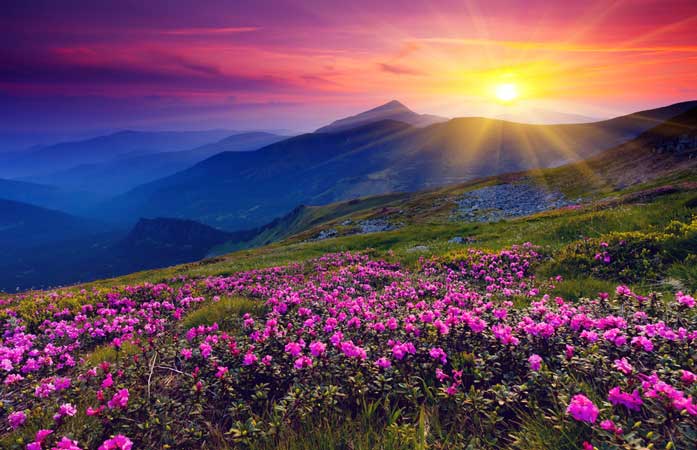




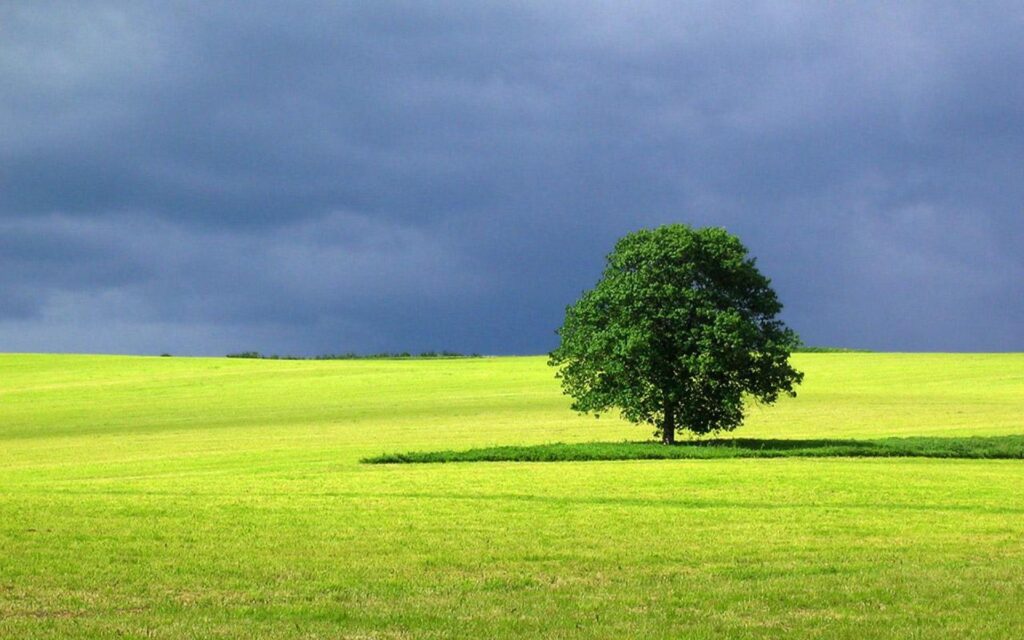
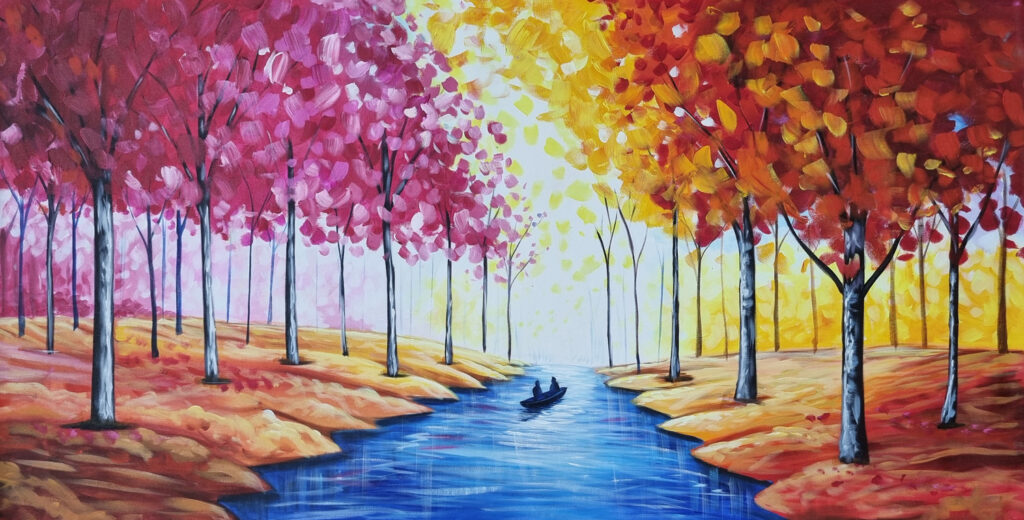
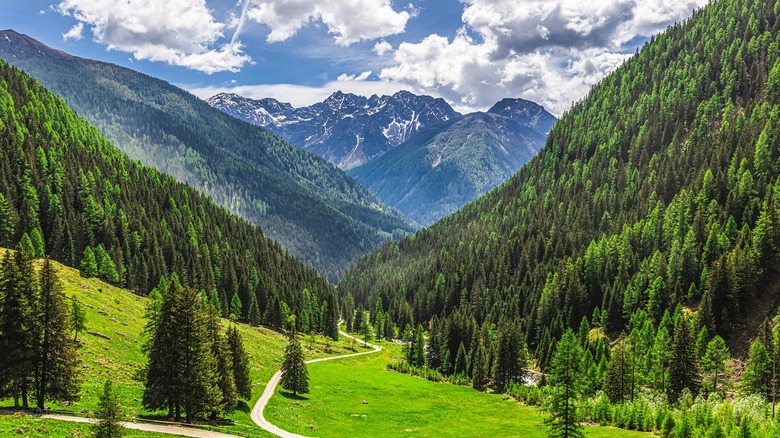
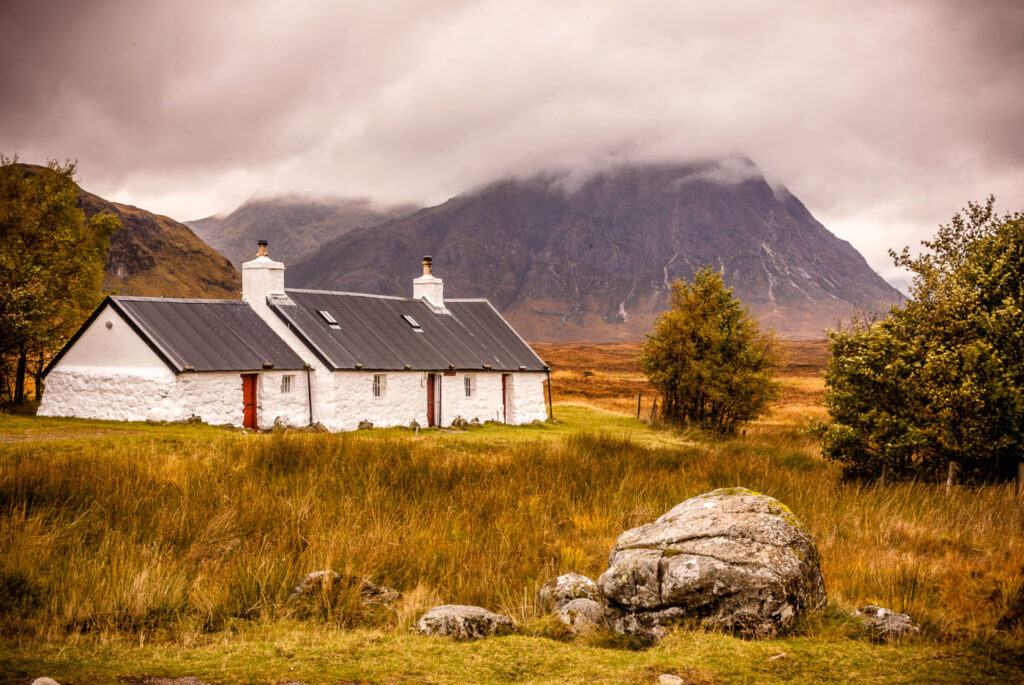
Mind Map

Definition
Landscapes are all the visible features of an area of land, often considered in terms of their aesthetic appeal.
Mood board









Mind Map

Who is Ansel Adams?
Ansel Adams was an incredible American landscape photographer and environmentalist who was known for his black-and-white images which showed the different perspectives and places of the American West. He was born on the 20th of February (San Francisco) , 1902 and died on the 22nd of April, 1984. An only child in a rather comfortable family. four years after Adams was born, a deadly earthquake of a whopping magnitude 7.9 struck the city. It was claimed that it cost more than 3,000 lives and pretty much left the city in absolute ruins. Adams family was majorly effected and was going through hard times in the unrelated financial crisis that followed in 1907, where New York Stock Exchange lost half of its value over the few weeks.
Adams did not fit it at school, his shyness was fuelled by his severely broken nose which he suffered during the earthquake, an unforgettable change that remained with him for the rest of his life. After Adams constantly changed schools, his dad had enough and finally decided to get him a tutor. During those years where he was tutored, Ansel took comfort in nature. He would take long walks in the forest and sand dunes that surrounded his family home. This is where his passion for nature started.
Although he was just as interested in music and photography, he later realised that he was not more suitable to be a professional musician, so with that conclusion, he poured his heart into photography, a skill he’d earned since he was 14. He gained this when he was given a Kodak Box Brownie Camera to take on family trips to the Sierra Nevada mountain range and the majestic Yosemite National Park.
Ansel achieved many things, one of the things being the fact that he helped found and renew a revolutionary group called Group f/64, an association of photographers that preached “pure” photography which advocated sharp focus and the use of the full tonal range of a photograph. The history behind this group was when Adams met photographer Edward Weston in 1927. They became really important to each other as colleagues and friends. This group was merging around the conceding greatness of Weston and the dynamic energy of Adams. Although the group was loosely organized and relatively short-lived, Group f/64 definitely brought the new West Coast vision of straight photography to national attention and influence.
With the mention of Edward Weston, in terms of the f/64 group, him and his son Brett, Ansel Adams, Imogen Cunningham, and a handful of other photographers, formed the famous group f/64, the name honouring an aperture setting on a lens one might stop down to in order to attain the sharpest focus on photograph. The successful group introduced their work in an exhibition at San Francisco’s DeYoung Museum.
Edward Weston (who was born in 1886 and died in 1958) and Ansel Adams, were two of the more influential American photographers of the twentieth century. These talented Californian artists launched their unique work during the years between the two world wars. Over the course of their lives, they became great friends who shared the same aesthetic.
Edward was an American photographer who was called “one of the most innovative and influential American photographers” and “one of the masters of 20th century photography.” Weston photographed some unique things, and over the course of his 40-year in the photography industry Weston photographed a set of subjects, including landscapes, nudes, still life’s, genre scenes, portraits and even whimsical parodies.He was very focused on people and placed of the American west and developed a “quintessentially American, and especially Californian, approach to modern photography”.
He was born in Chicago but at the ripe age of 21, he moved to California. He knew he wanted to be a photographer at an early age and from the start he wanted his work to typically focus on soft and Pictorialism which was what was popular at the time. Later he ditched that style and went on to be one if the foremost champions of highly detailed photographic images.
However, in 1947 he was sadly diagnosed with Parkinson’s disease soon stopped photographing. He then spent the rest of his 10 years of his life overseeing the printing of more than 1,000 of his most famous images.
Edward Weston work:

Ansel would later create a system called the Zonal system (with 10 different tones) so that it would ensure that all tonal values were represented in the images. A tool for controlling an image based on a four interlocked variables distinctive to photography: the sensitivity of the negative paper, exposure time, lighting and studio development.

Etc…

Ansel Adams was a supporter for environmental protection, national parks and forming an on going legacy of feedback to the power of nature and the feeling sublime.
It is evident that Ansel empathised romanticism in his work. Not only was that said but it was seen physically in his work. With his techniques, he was able to romanticise his inspiring work. Adams did this by using black and white film in his photos. He used this when he detained pictures of tall mountains, frosted hills, angelic lakes. Because of this, it added a certain uniqueness and produced a unique set of shades, tones, textures, lights, shadows and tonal value to his work, differentiating his work from others. This is an example where Ansel Adams created a romanticised example of landscape photography.
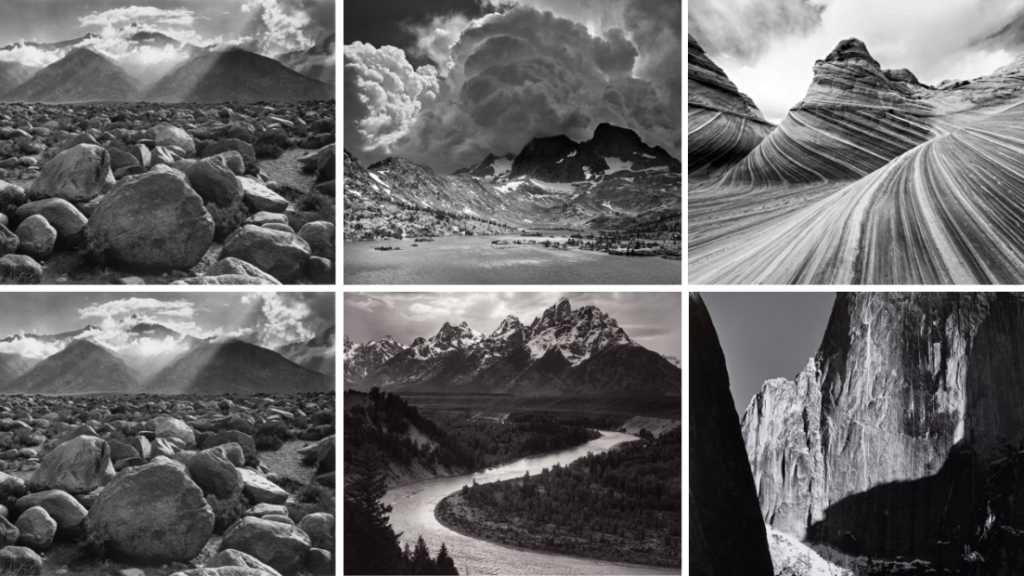
“You don’t take a photograph, you make it” Ansel Adams.
“There is nothing worse than a sharp image of a fuzzy concept” Ansel Adams
What is Romanticism?
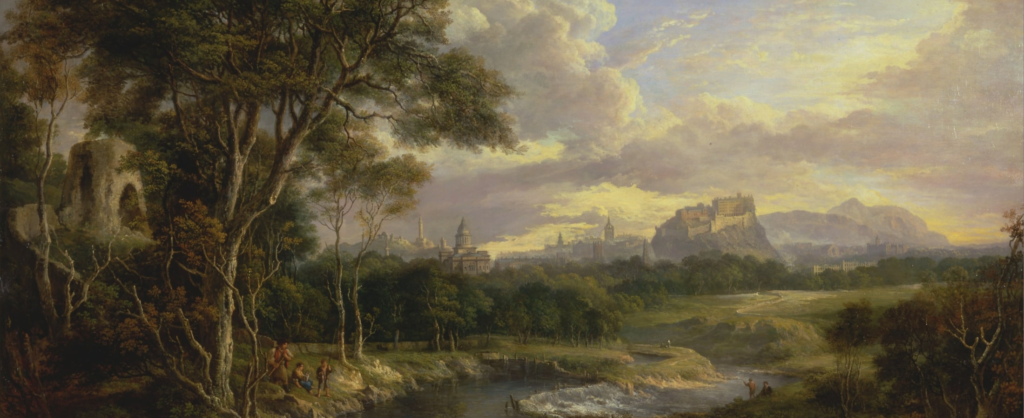
“Romanticism is beauty without bounds-the beautiful infinite.” – Jean Paul
Romanticism is an artistic and intellectual movement which stemmed from the rich and wealthy within Europe, around the late 18th to early 19th century. It consisted of attitudes, Ideals and art pieces that expressed a large emphasis on the romanticized rather than realistic celebrations of nature. Creating a falsified utopia out of the unsophisticated countryside. Romanticism generated from the individualism of the wealthy people in the 18th and 19th century’s conceptions of nature.

The Romanticism movement in art is highly associated to the ‘Age of Enlightenment’. This was an intellectual movement from the 17th and 18th century that consisted of ideas concerning God, Humanity, Nature but most importantly Reason due to its primary source of authority and legitimacy. The reason for its connection came from their similarities in their philosophies.
Coming from the Era of Enlightenment, The art form grew out of the disillusionment of values regarding reason and order after the French Revolution in 1789, where the French people revolted against their oppressive wealthier population and monarch. Brining an entire change to the nation neighbouring countries such as Britain, Italy and Spain adapted to these new ideals through theory and art.

What is the difference between Bucolic and pastoral?
Bucolic often refers to the pleasant aspects of country life and its nature. Pastoral is similarly defined, positively as the working elements of country.
The Art of the sublime –
The art of the sublime, which took place at same time of the enlightenment, is understood to mean a quality of greatness and grandeur, that inspires wonder and awe. This is specifically with regards to landscape. This can seen with this image for example.

Romanticism artist –

“I never saw an ugly thing in my life: for let the form of an object be what it may, – light, shade, and perspective will always make it beautiful.”
John Constable, a Romanticist painter from the 1800s, painted his conceptions of the countryside like many others of the bucolic art pieces made by other artists at the time. Although still representing the exaggerated elements of nature, John constable drew directly from nature within most of his art pieces. This was due spending his childhood, in a small Suffolk village where he lived and witnessed the rural economy in its workings, this would later go on to inspire his artistical career and illustrate this through his romanticist paintings.

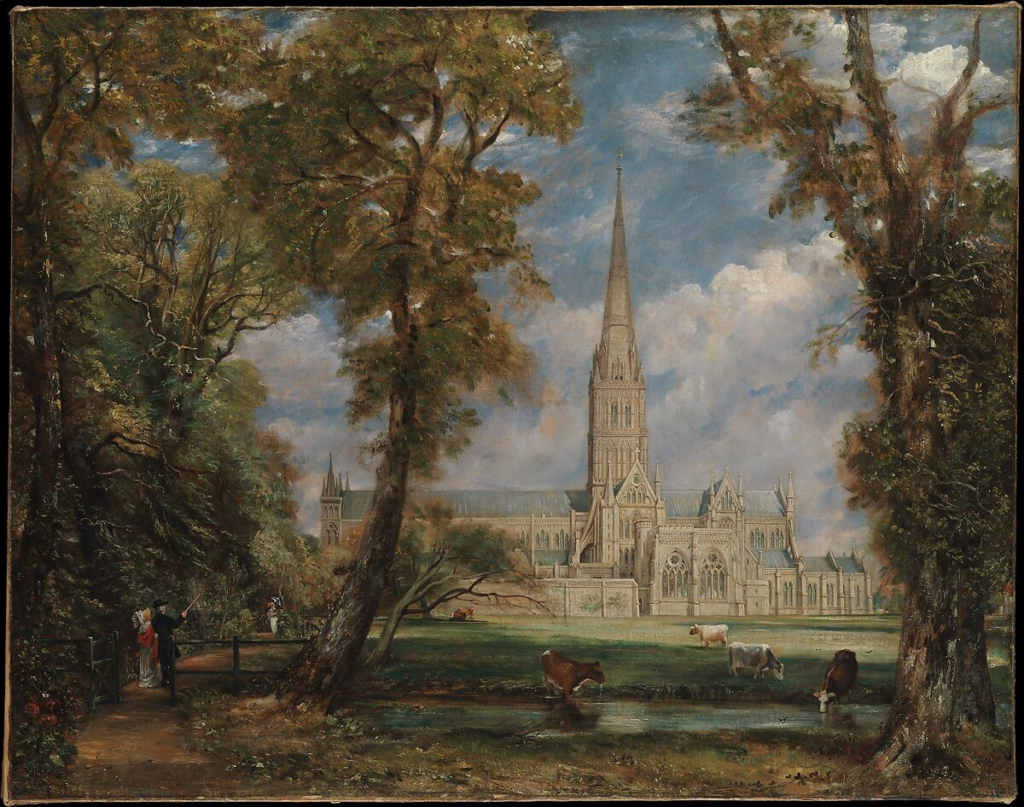

What is it?
The term “rural landscape” is a set of a variety of geographic and geological features such as forests, cropland, deserts, swamps, pastures, grasslands, lakes, rivers.
In more depth, “rural landscape” narrates the various pieces of a land that is not populated or majorly developed, and not set aside for preservation in a natural state.
What is the difference between bucolic and pastoral?
Bucolic, as a noun may be seen as either an individual who lives in the country or it can also mean a poem that celebrates the pleasures of living in a country life.
Pastoral is the Eclogues of the Latin poet Virgil (70-19 BCE) are sometimes referred to as his Bucolics
Mood board:
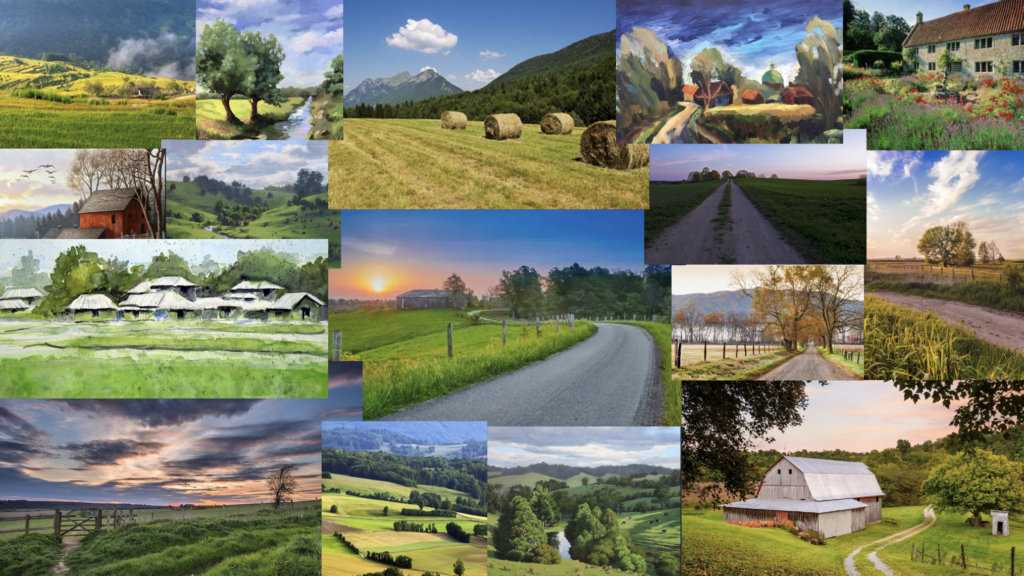
Mood board:

Mind map:

Introduction to Romanticism –
Romanticism is a movement and feeling that surfaced around the late 18th century, romantics focus more on the natural beauty of the world and the emotions and feelings that come with that.
It was characterised with a focus of emotion, thought/imagination, and individualism. Romanticism placed a strong emphasis on creative freedom and individual expression, as well as a celebration of nature and the wonders of the natural world. Romanticism can be seen as a rejection of the precepts of order ; calm, harmony, balance, idealization and rationality that stereotypically thought out classicism in the 18th century.
Romanticism mood board –

Characteristics of romanticism –
A deepened appreciation of nature is an example of a characteristic which entails that romantic’s look at things with a lot more awe, they take in the natural beauty more then the regular person, appreciating it more. They have a deeper appreciation of the beauty of nature ; the idea of emotion over reason.
A deeper understanding of emotions and the connection of that to the natural world is another example of a characteristic and it means that romantics value and appreciate how beauty affects their emotions and are very in tune with feeling in a sense where a view or picture may make them feel emotions in a deeper way then most people.
The sublime
For Romantics, the sublime is a meeting of the subjective-internal (emotional) and the objective-external (natural world): we allow our emotions to overwhelm our rationality as we experience the wonder of creation.
Edmund Burke believed that the ruling principle of the sublime was terror. ~Whatever therefore is terrible, with regard to sight, is sublime too … Indeed terror is in all cases whatsoever, either more openly or latently, the ruling principle of the sublime. ~Burke was interested in what happens to the self when assailed by that which seems to endanger its survival.

Ansel Adams
Ansel Adams (1902-1984) was an iconic American photographer known for his stunning black-and-white landscape photographs of the American West. He was born on February 20, 1902, in San Francisco, California, and developed a deep love and appreciation for nature at an early age. Adams’ passion for photography began in his teenage years when he took his first photographs of Yosemite National Park using a Kodak Brownie camera.

Adams’ photography style was characterized by his meticulous attention to detail, technical expertise, and dedication to capturing the beauty of the natural world. He was a pioneering figure in the development of the “zone system,” a technique that allowed photographers to achieve precise control over exposure and development in black-and-white photography.

Throughout his career, Adams produced an extensive body of work that showcased the grandeur and majesty of the American landscape, with a particular focus on the rugged mountains, pristine wilderness, and dramatic vistas of the American West. He is best known for his iconic images of Yosemite, the Sierra Nevada Mountains, and the Southwest, which have become some of the most recognizable and celebrated photographs in the history of photography.

In addition to his photographic work, Adams was also a passionate conservationist and environmental advocate. He used his photography to raise awareness about the importance of preserving and protecting the natural world, and he played a key role in the establishment of several national parks and wilderness areas.

Ansel Adams’ contributions to photography and conservation have had a lasting impact on the art world and the environmental movement. His work continues to inspire and captivate audiences around the world, and he is widely regarded as one of the greatest landscape photographers in history. Adams passed away on April 22, 1984, leaving behind a rich legacy of art and advocacy for the preservation of the natural world.
Edward Weston
Edward Weston (1886-1958) was a prominent American photographer known for his pioneering work in the field of modern photography and his groundbreaking contributions to the art of photographic composition. He was born on March 24, 1886, in Highland Park, Illinois, and developed an early interest in photography, experimenting with a simple box camera as a child.

Weston’s photographic style was characterized by his meticulous attention to detail, technical precision, and innovative approach to composition. He is best known for his groundbreaking use of the large-format camera, which allowed him to capture exquisite details and textures in his images with unparalleled clarity and depth.

Throughout his career, Weston produced a diverse body of work that encompassed portraits, still lifes, landscapes, and abstract studies. He is perhaps most famous for his stark, minimalist images of natural forms such as shells, peppers, and rocks, which he transformed into powerful, abstract compositions that revealed the inherent beauty and geometry of these everyday objects.

Weston was a key figure in the development of Group f/64, a collective of like-minded photographers including Ansel Adams, Imogen Cunningham, and others who shared a commitment to creating sharp-focus, detailed images that emphasized the intrinsic qualities of the photographic medium. The group’s name, f/64, referred to the small aperture setting that Weston often used to achieve maximum depth of field in his images.

In addition to his artistic achievements, Weston was also renowned for his technical expertise and innovative approach to photographic techniques. He experimented with new printing processes, toning methods, and darkroom manipulations to produce rich, tonally exquisite prints that set new standards for photographic excellence.

Edward Weston’s contributions to the field of photography have had a profound and lasting impact on the development of modern photographic art. His work continues to be celebrated for its technical mastery, aesthetic beauty, and profound insight into the nature of visual perception. Weston passed away on January 1, 1958, leaving behind a rich legacy of artistic innovation and creative excellence in the world of photography.
Fay Godwin
Fay Godwin (1931-2005) was a British photographer known for her powerful images of the British landscape and environment. She was born on February 17, 1931, in Berlin, Germany, but grew up in England. Godwin initially pursued a career as a graphic designer before transitioning to photography in the 1960s.

Godwin’s photography style was characterized by her deep connection to the English countryside and a keen awareness of environmental issues. She often collaborated with writers and poets, creating stunning photographic essays that captured the beauty and fragility of the natural world. Her black-and-white images were celebrated for their stark beauty, emotional depth, and poetic resonance.

One of Fay Godwin’s most famous works is the collaboration with Ted Hughes, the poet laureate, on the book “Remains of Elmet” (1979). The book featured Hughes’ poems alongside Godwin’s evocative photographs of the Yorkshire landscape, creating a powerful and poignant exploration of nature, myth, and memory.

Throughout her career, Godwin produced a wide range of photographic projects that explored themes such as rural life, the coastline, industrial landscapes, and the impact of human activity on the environment. She was a passionate advocate for conservation and environmental protection, using her photography to raise awareness about the importance of preserving the natural world.

In addition to her photography, Godwin was also a prolific writer and published several books that combined her images with insightful reflections on photography, landscape, and the creative process. She was a leading figure in the British photography community and was deeply respected for her artistic vision, technical skill, and humanitarian values.

Fay Godwin’s work continues to inspire and influence photographers, environmentalists, and nature lovers around the world. Her images are celebrated for their exquisite beauty, profound insight, and enduring relevance to contemporary issues of landscape, conservation, and the human relationship to the natural world. Fay Godwin passed away on May 27, 2005, leaving behind a rich legacy of art and activism in the field of photography.
Don McCullin
Don McCullin is a British photojournalist known for his powerful and poignant images of conflict, suffering, and human struggle. He was born on October 9, 1935, in London, England. McCullin began his photography career in the late 1950s, working as a photographer for the “Observer” newspaper before becoming a freelancer in the 1960s.

McCullin gained international recognition for his coverage of some of the most significant conflicts and humanitarian crises of the 20th century, including the Vietnam War, the Northern Ireland conflict, the Biafran War, and the Lebanese Civil War. His stark and emotive images captured the human cost of war with sensitivity and compassion, earning him numerous awards and accolades for his fearless and evocative photography.

One of McCullin’s most iconic images is his photograph of a shell-shocked U.S. Marine during the Vietnam War, which became a symbol of the psychological toll of combat. His images were raw, unflinching, and deeply moving, offering a powerful visual testimony to the realities of war and conflict.

In addition to his coverage of war and conflict, McCullin also documented social issues and hardship in his native England, including poverty, homelessness, and social deprivation. His images of marginalized communities and individuals revealed the human face of suffering and resilience, earning him a reputation as a compassionate and empathetic photographer.

Throughout his career, McCullin’s work has been exhibited in galleries and museums around the world, and he has published several acclaimed books showcasing his photography. He has received numerous awards for his contributions to photojournalism, including the Cornell Capa Award from the International Center of Photography and a knighthood for services to photography.

Today, Don McCullin is considered one of the greatest photojournalists of his generation, admired for his courage, integrity, and unwavering commitment to documenting the human experience in all its complexity and nuance. His work continues to inspire and challenge audiences, prompting reflection on the realities of war, conflict, and social injustice in the modern world.
What is Romanticism?
Romanticism was an artistic, literary, and intellectual movement that originated in Europe in the late 18th century and peaked in the early to mid-19th century. It was characterized by an emphasis on emotion, individuality, imagination, and the beauty of nature. Romanticism rejected the rationalism and restraint of the Enlightenment, instead focusing on the expression of personal feelings and experiences. Romanticism was embodied in various forms of art, including literature, music, painting, and sculpture, and had a profound impact on Western culture. Key themes of Romanticism include the celebration of nature, the importance of intuition, the exploration of the supernatural and mystical, and the exaltation of the individual and the artist.
What is the history of Romanticism?
Romanticism emerged in the late 18th century as a reaction against the values and ideals of the Enlightenment, which prioritized reason, logic, and scientific inquiry. The movement began in Europe, particularly in Germany and England, before spreading to other countries such as France, Italy, and the United States.
The Romantic era was characterized by social, political, and economic upheaval, including the French Revolution, the Industrial Revolution, and the Napoleonic Wars. These events influenced the development of Romantic ideals, as artists and thinkers increasingly turned to nature, emotion, and the individual as sources of inspiration and meaning.
Some of the key figures associated with Romanticism include poets like William Wordsworth, Samuel Taylor Coleridge, and John Keats; writers like Johann Wolfgang von Goethe, Victor Hugo, and Mary Shelley; composers like Ludwig van Beethoven and Franz Schubert; and artists like Caspar David Friedrich and Eugene Delacroix.
Romanticism reached its peak in the early to mid-19th century but continued to influence artistic and intellectual movements well into the 20th century. Its legacy can be seen in the emphasis on emotion and subjectivity in modern art and literature, as well as in the continued celebration of nature and the individual in contemporary culture.
Mood board

What is The Sublime?
In Romanticism, the concept of the sublime refers to a sense of awe, astonishment, and reverence for the grandeur and power of nature. The sublime often evokes feelings of both beauty and terror, as well as a sense of the infinite and the unknowable. It is associated with the overwhelming experience of the natural world and the emotions it can inspire in the viewer.
In photography, the sublime is often represented through images of vast landscapes, dramatic weather conditions, and powerful natural phenomena such as storms, mountains, and oceans. Photographers use composition, lighting, and perspective to create images that evoke a sense of the sublime, inviting viewers to contemplate the beauty and power of the natural world.
Photographers such as Ansel Adams, Edward Burtynsky, and Hiroshi Sugimoto have explored the sublime in their work, capturing the grandeur and mystery of nature in ways that transcend mere representation. By harnessing the power of photography to capture moments of awe and wonder, these artists invite viewers to connect with the sublime and experience the transformative power of nature.
John Constable – The Haywain
John Constable was an English landscape painter who lived from 1776 to 1837. He is considered one of the greatest painters of the Romantic era, known for his realistic and detailed depictions of the English countryside. Constable’s works often focused on rural scenes, particularly those in Suffolk and Essex, where he grew up and spent much of his life.
One of Constable’s most famous paintings is “The Hay Wain,” completed in 1821. The painting depicts a horse-drawn cart, known as a hay wain, crossing a shallow stream in the heart of the English countryside. The scene is set in the picturesque Stour Valley on the border between Suffolk and Essex, a place that held great significance for Constable.
“The Hay Wain” is celebrated for its vibrant colors, meticulous attention to detail, and atmospheric effects, which capture the beauty and tranquility of the English landscape. The painting has become an iconic image of the Romantic ideal of nature and has inspired generations of artists and admirers.
Constable’s dedication to capturing the beauty of the natural world and his ability to convey a sense of peace and harmony in his landscapes have made him a beloved figure in art history. His works continue to be celebrated for their timeless beauty and emotional resonance.

What is social Commentary?
Social commentary is a form of expression that critiques or reflects on societal issues, norms, or behaviors. It is a way for artists, writers, filmmakers, and other creators to engage with and comment on the world around them, often intending to spark awareness, dialogue, and change.
Social commentary can take many forms, including art, literature, music, film, theater, and even social media. It can address a wide range of topics, such as politics, inequality, injustice, discrimination, environmental issues, and cultural norms. By highlighting and questioning these issues, social commentary can challenge viewers or listeners to think critically about the world they live in and consider different perspectives.
Artists use various techniques and mediums to convey social commentary, including satire, symbolism, allegory, irony, and direct representation. Through their work, they may shed light on systemic problems, advocate for social justice, give voice to marginalized communities, or critique the status quo.
Overall, social commentary serves as a powerful tool for provoking thought, raising awareness, and promoting empathy and understanding of the complexities of the human experience. It plays a vital role in facilitating conversations about important social issues and inspiring positive change in society.
Before the 16th century, landscape didn’t really exist as a genre in its own right. Landscapes were merely seen as backgrounds for portraits and other forms of paintings. the term “landscape comes from the Dutch word “landschnap” which means “region” or “tract of land” but became associated with the art in the early 1500s, this is due to the fact that in the Netherlands landscapes be came popular with protestants to decorate their homes. Outside the Netherlands, landscapes often depicting scenes from mythology or biblical settings, as well as historical scenes.
The 17th century brought around the ear of classical landscapes. Rome became the ideal place for landscapes to be painted. Everything within the paintings became purposefully placed to create the balanced and timeless mood to help the paintings seem harmonious. Many of these landscapes sought to illustrate an ideal landscape recalling Arcadia, a legendary place in ancient Greece known for its quiet pastoral beauty. However, despite the commissions and popularity of them they remained low in the hierarchy of the academies.
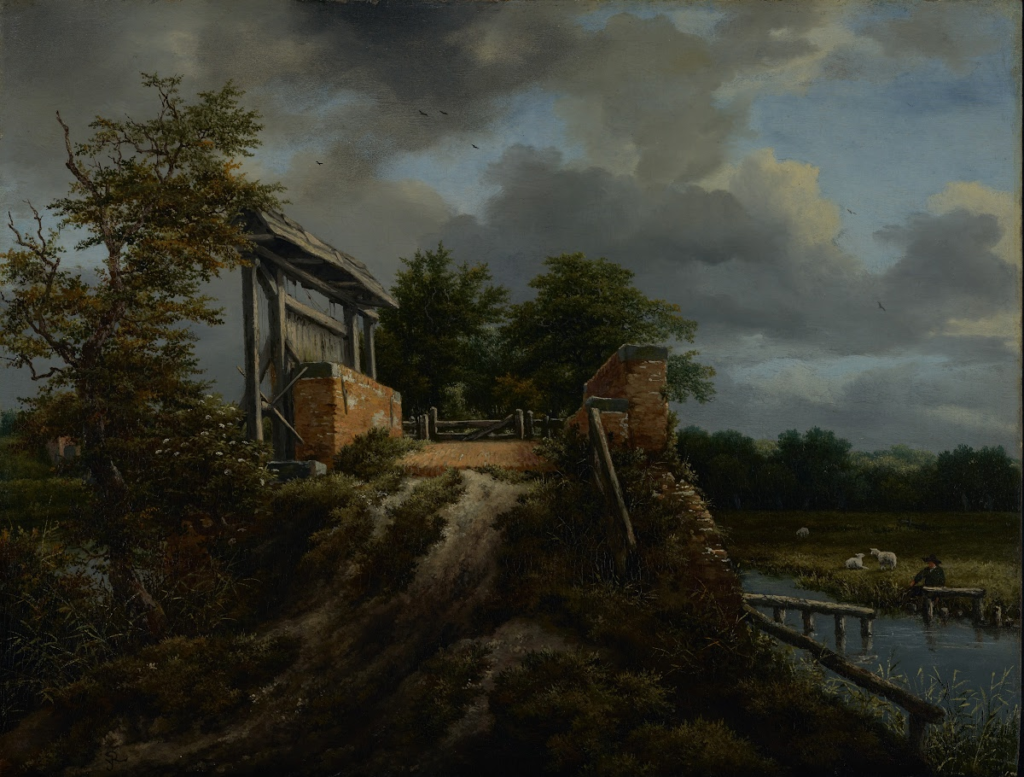
The late 18th century saw Pierre-Henri de Valenciennes change the views on landscape paintings, he saw them as something to be celebrated and considered with a worthy status. In 1800 he published the Eléments de perspective practique which emphasized the aesthetic ideal of the “historic landscape.” Generations of French landscape painters would benefit from this book and the recognition Valenciennes’ received.
As the 19th century brought round the industrial revolution, the standard hierarchy of art collapsed land scape paintings gained in popularity. Barbizon painters such as Théodore Rousseau and Charles Daubigny became less concerned with idealized, classical landscapes and focused more on painting out-of-doors directly from nature—a practice known as plein air painting. The 19th century also saw the start of landscape photography which would greatly influence the landscape painters’ compositional choices. Courbet’s radical painting techniques and independent spirit paved the way for the next generation of painters including Claude Monet, Camille Pissarro, Auguste Renoir, and Alfred Sisley, these would become some of the most famous painters in history, other wise know as the impressionists.

During the 20th century, artist used landscape photography to create interpretations of the land through pictorial effects and, later, through formal compositions of close-up, cropped views of the landscape. Photographer Ansel Adams captured attention with his breath-taking views of the wild beauty of the American West. In the second half of the 20th century, the definition of landscape was challenged and pressed to include concepts like urban landscapes, cultural landscapes, industrial landscapes, and landscape architecture. Today, the landscape continues to be a subject artists turn to when contemplating the ways we relate to the places where we live and the impact we as humans have on the land.
It is hard to trace the exact origin of landscape photography since the very first photography that we know of was taken in an urban landscape during 1826 or 1827 by the French inventor Nicéphore Niépce. Then in 1935 the English scientist Henry Fox Talbot came into play with various photography innovations.
Traditions
Landscape photographs typically capture the presence of nature but can also focus on human-made features or disturbances of landscapes. Landscape photography is done for a variety of reasons. Perhaps the most common is to recall a personal observation or experience while in the outdoors, especially when travelling.
According to records, the earliest known evidence of a landscape photograph was taken between the years of 1826 and 1827. It was an urban landscape photo taken by a French inventor by the name of Nicephore Niepce.
The first landscape photograph

Modern Landscapes
How have landscape photography evolved?
The first cameras used for landscapes were simple wooden boxes with a photosensitive material coating a plate. After some photographic innovation, view cameras became possible. These cameras are also known as large format cameras and are precision devices built to capture reality in a way no other camera can.
Landscape photography commonly involves daylight photography of natural features of land, sky and waters, at a distance—though some landscapes may involve subjects in a scenic setting nearby, even close-up, and sometimes at night.
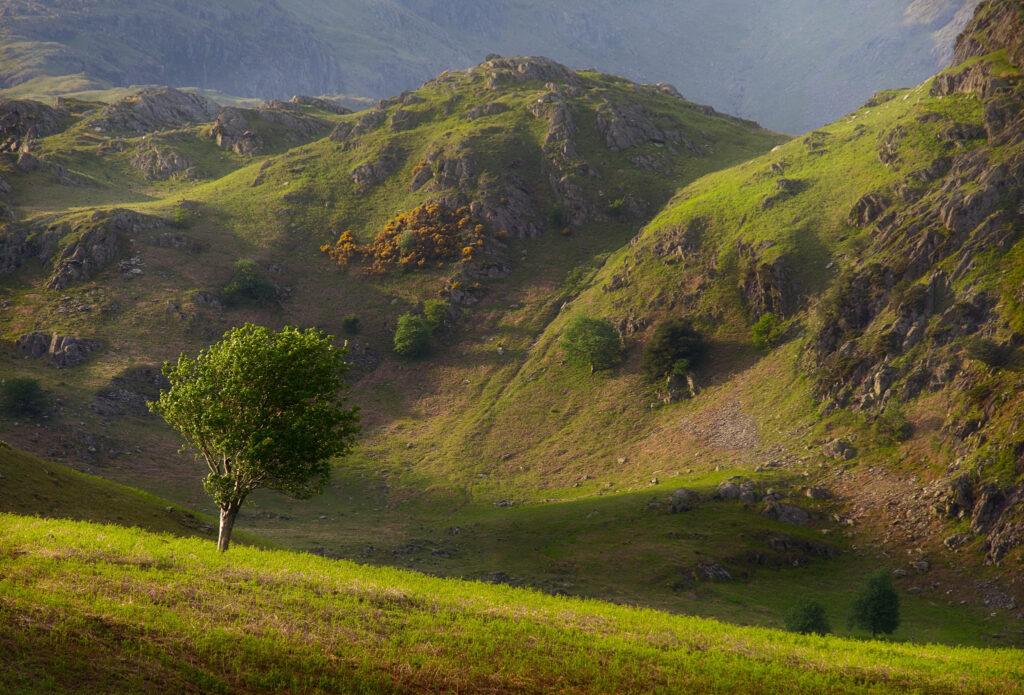


When did the genre of landscapes begin?
After the fall of the Roman Empire, the tradition of depicting pure landscapes declined, and the landscape was seen only as a setting for religious and figural scenes. This tradition continued until the 16th century when artists began to view the landscape as a subject in its own right. In the Eastern tradition, the genre can be traced back to 4th-century-ce China.